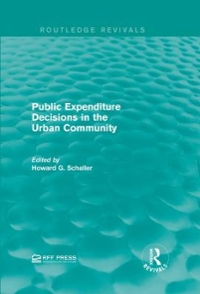Question
A three-person society has a Rawlsian social welfare function U =min u1(c1), u2(c2), u3(c3) defined over the utilities of the three citizens. ci is the
A three-person society has a Rawlsian social welfare function U =min u1(c1), u2(c2), u3(c3)
defined over the utilities of the three citizens. ci is the consumption of citizen i. Suppose
u1(c1) = c1, u2(c2) = c2, and
u3(c3) = 2(c3)^0.5
. The society has total 100 units of consumption to divide among
the three citizens. What allocation will this society choose to maximize social
welfare if the government has full control to allocate the units of consumption as
it likes? Suppose instead that initially 80 units belong to citizen 1 with 10 units
belonging to each of citizens 2 and 3 (this is called an endowment). The gov-
ernment loses $0.50 for each unit it takes away from citizen 1 to give to others.
Will the government still raise social welfare by implementing the solution you
found above or would it be better off leaving the citizens to consume their initial
endowment? Why?
Step by Step Solution
There are 3 Steps involved in it
Step: 1

Get Instant Access to Expert-Tailored Solutions
See step-by-step solutions with expert insights and AI powered tools for academic success
Step: 2

Step: 3

Ace Your Homework with AI
Get the answers you need in no time with our AI-driven, step-by-step assistance
Get Started


